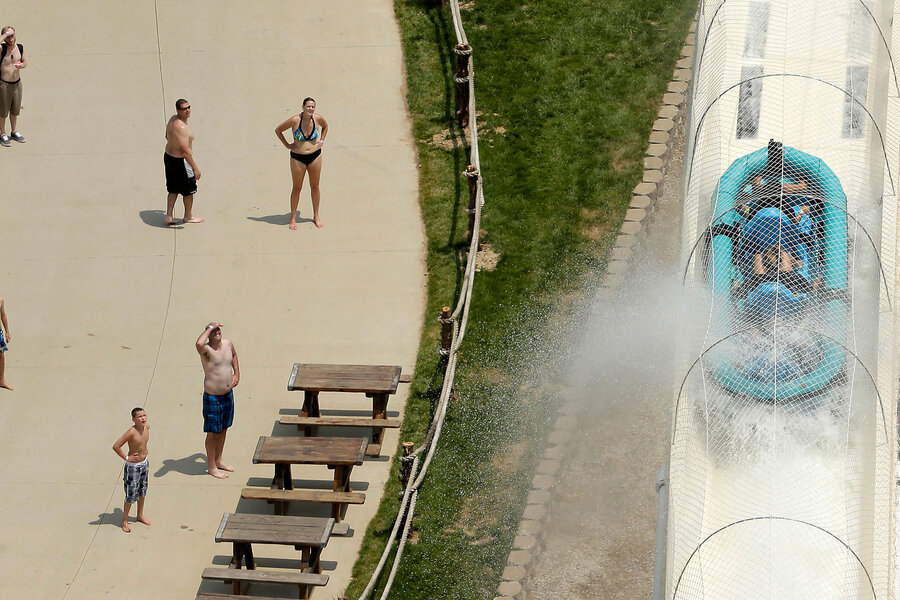Kansas boy dies in water park tragedy: How do we make water parks safer?
Loading...
A fun outing turned tragic on Sunday when a ten-year-old boy was killed in a water slide accident at Schlitterbahn Waterpark in Kansas City, Kansas.
The boy, identified as Caleb Thomas Schwab, son of Kansas state Rep. Scott Schwab, died on the Verruckt, a 168-foot-tall water slide that holds the Guinness World Record as the world's tallest. Officials said they did not yet know what happened, and would conduct a full investigation.
While water slide deaths are rare, injuries are more common than you might think: in New Jersey, for example, the slippery attractions are the biggest source of injuries at amusement parks and carnivals. Out of 552 amusement park ride incidents occurring in the state over a span of five years, 122 happened on a water slide.
Water attractions in general, including wave pools, surfing rides, and play areas, were responsible for 40 percent of all injuries, an especially high percentage considering only 11 percent of all attractions were water-based.
However, water slides have come a long way when it comes to safety. While these numbers may seem high, they are significantly lower than they were in the earlier days of the water slide industry, due to advances in the science behind water slide design.
Now, many slide design companies use software that can simulate the effects of friction and mass on a slide to ensure that riders of all sizes will be safe.
"Safety is our number one concern. We're thinking about things like, 'Are you going to stay on the fiberglass tube?'" Rick Hunter, president and chief executive officer of water slide design company ProSlide Technology, told National Geographic. "It's really easy to do a computer model and look at curves and drops and forecast rider position and speed."
The Verruckt opened in 2014, after a series of unexplained delays. Two media sneak peek days around that time were canceled, reportedly due to problems with the slide's conveyor belt system. In a news article linked to a news release announcing one of the delays, the park's co-owner told USA Today that he and the Verruckt's senior designer had originally based their design calculations on a roller coaster, then redesigned the slide due to safety concerns.
A representative from the park told reporters that the park's rides undergo daily inspections. They are also inspected by an "outside party" prior to each season.
The Verruckt will be closed during the pending investigation.
This report contains material from the Associated Press.






